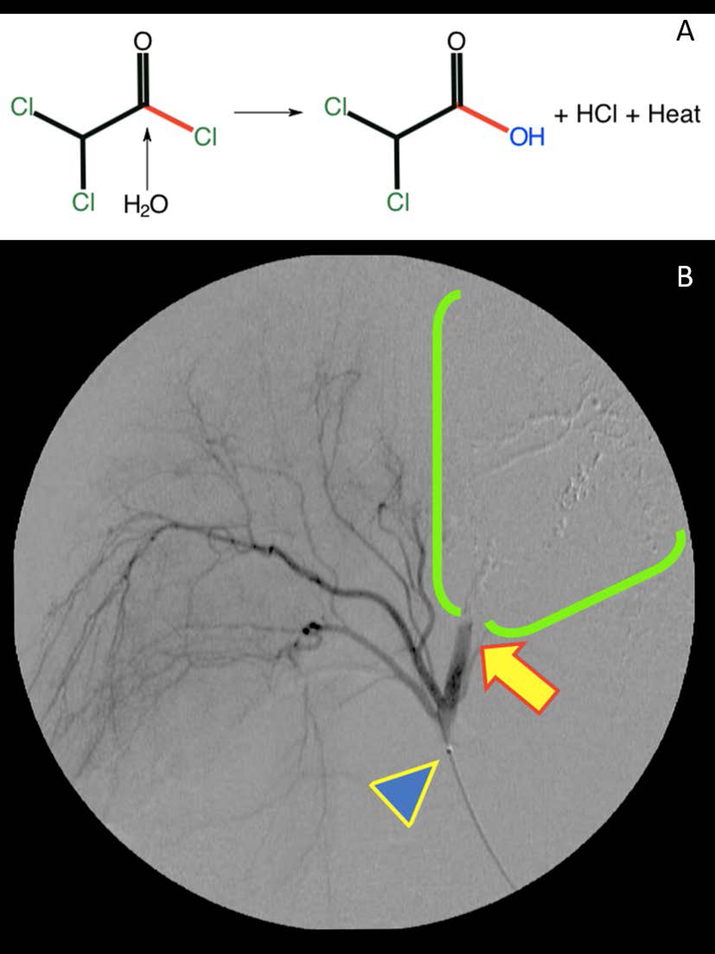FIGURE 1.
A, In situ thermoembolization reaction chemistry after intravascular delivery of solution from a microcatheter. Dichloroacetyl chloride is strongly electrophilic and readily undergoes hydrolysis in the presence of a nucleophile such as water. In the process, the carboxylic acid is produced along with an equivalent of hydrochloric acid, and a substantial amount of heat energy is released(−96 kJ/Mole). Very localized, highly denaturing conditions are the result. B, Thermoembolization causing rapid stasis in target vessel distribution. A representative digital subtraction angiogram obtained within 5 minutes after delivery shows X-ray contrast in fine branching vessels that supply unaffected areas on the left side of the image and absence of contrast on the right in the embolized territory. Note catheter tip (blue arrowhead) and abrupt cutoff of contrast with static column (yellow arrow) and downstream absence of contrast in treated area (green bracket territory)

